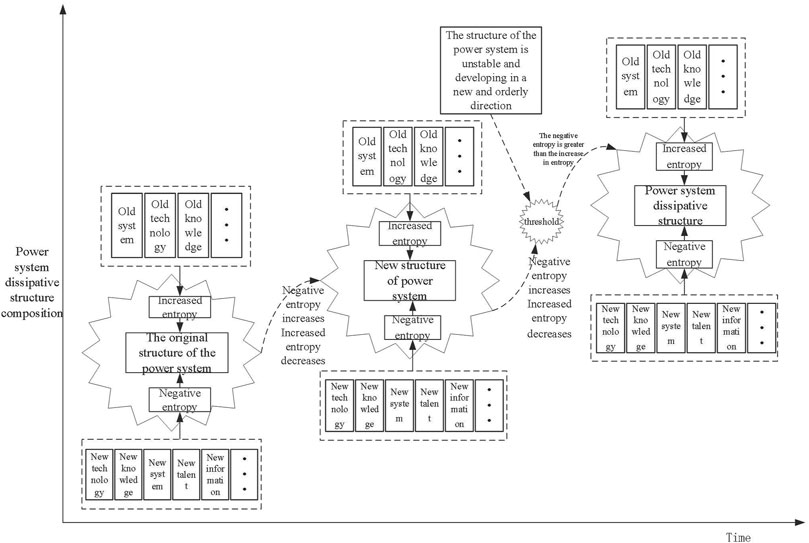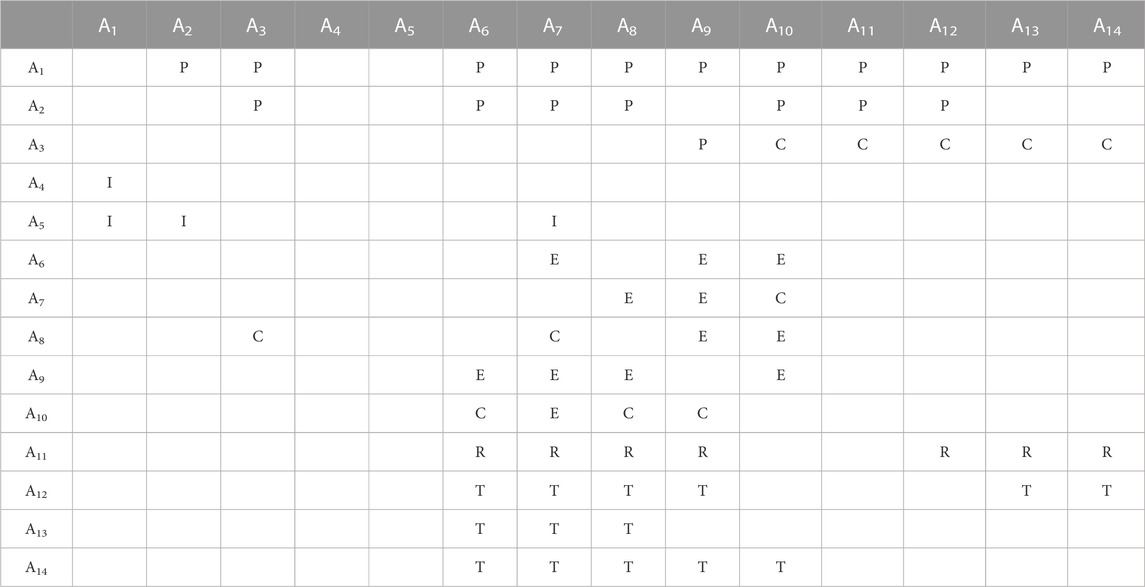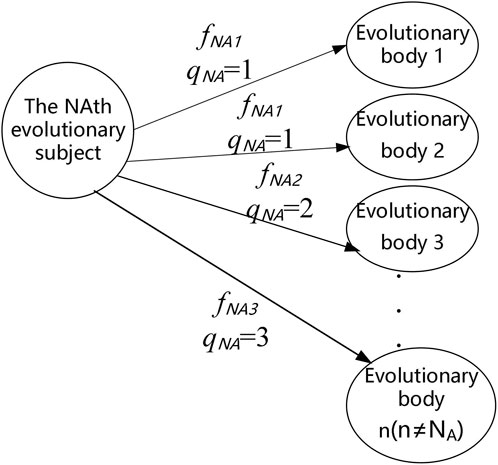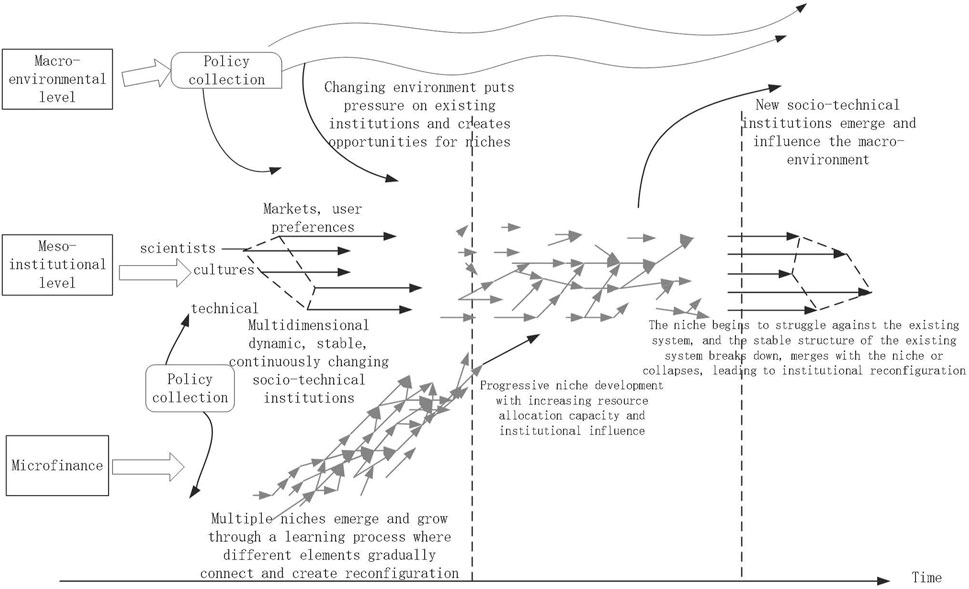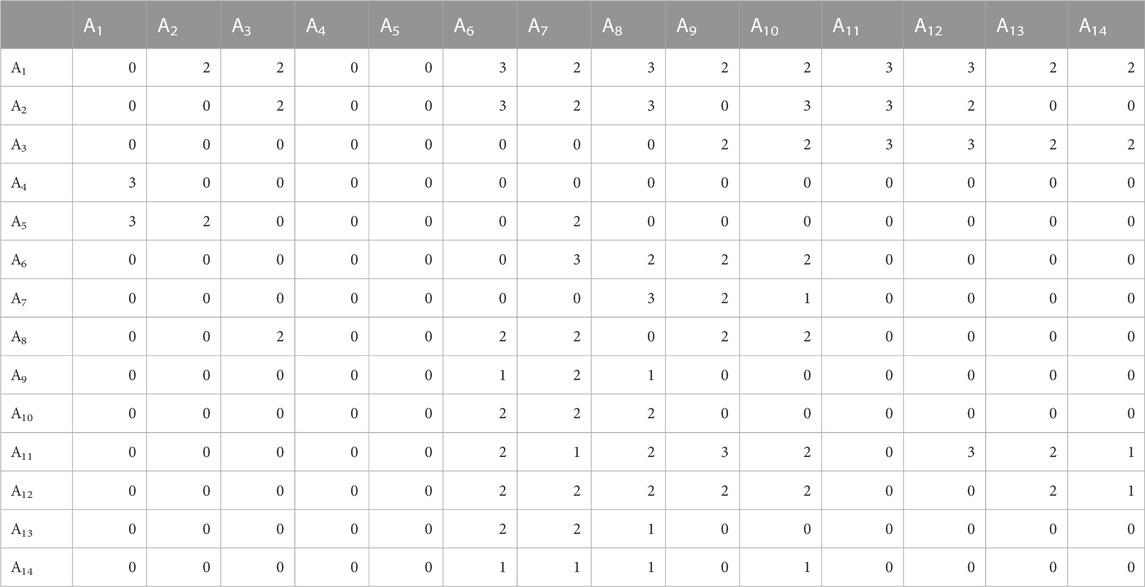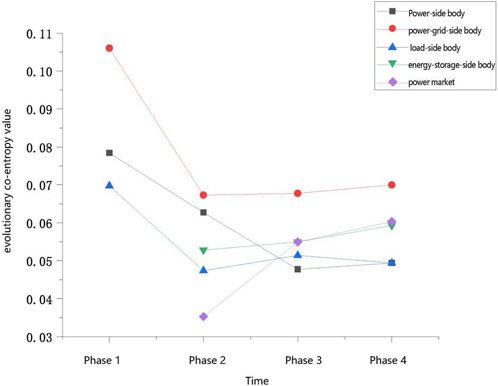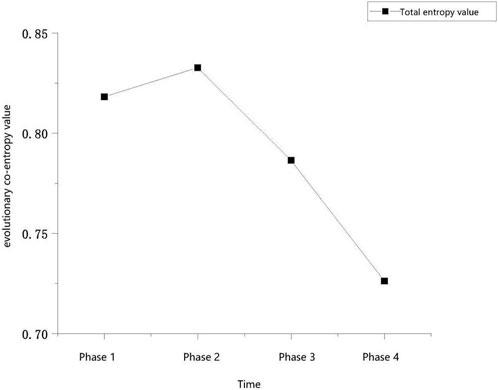- 1State Grid Sichuan Economic Research Institute, Chengdu, China
- 2State Grid Sichuan New Power System Research Institute, Sichuan, China
The evolution of power system is a dynamic and complex process. Whether the evolution of power system can adapt to the macro environment and develop with all subsystems within the system depends on the matching and integration development among different evolutionary subjects. Based on the dissipation theory and Brusselator model, this paper constructs an evolutionary synergy model of the power system, and quantitatively analyzes the evolutionary synergy relationship between the evolving subjects of the power system and the overall evolutionary process of the power system. Then, from the socio-technical system transformation theory, we analyze the evolutionary elements of macro-environmental level, meso-institutional level and micro-beneficial level in the process of system transformation in China and the interaction among them. Finally, by comparing the entropy changes of the evolutionary participant subjects and the overall power system at each stage, the endogenous mechanism of the power system, the external elements and their interactions on the system development are studied in order to reveal the evolutionary synergistic law of China’s power system and make suggestions for the development of the new power system.
1 Introduction
On 22 September 2020, President Xi Jinping announced at the 75th session of the United Nations General Assembly that China will strive to peak carbon dioxide emis-sions before 2030 and strive to achieve carbon neutrality before 2060 (referred to as the “dual carbon” goal). The construction of a new power system with new energy as the main body is not only an important direction for the transformation and upgrading of China’s power system, but also a key way to achieve the goal of “carbon peak and carbon neutral” (Fan et al., 2022). To this end, it is necessary to promote the transformation of the traditional power system dominated by fossil energy to a new power system with new energy as the main body, and accelerate the decarbonization of electricity and promote the clean energy transformation by vigorously developing new energy and building a new power system (Shu, 2021; Zhang and Kang, 2022). In the process of transforming the traditional power system to the new power system, the existing institutional mechanisms and policy systems still face some difficulties and challenges, and it is difficult to adapt to the needs of promoting energy transformation under the new situation. Therefore, it is very important to study the evolutionary coordination process of the power system and reveal the evolutionary coordination law of China’s power system.
With the continuous advancement of the energy revolution and the large-scale access of new energy, it is imperative to promote the reform of the power system and build a new power system. Literature (Feng et al., 2014) based on complex network theory, the power grid evolution network under different development and evolution modes is estab-lished, and the statistical characteristics and robustness of each network are compared and analyzed, which provides reference and basis for the planning and design of power grid structure. Literature (Dong et al., 2021) reviews and summarizes the previous power market, and focuses on the issues related to power market construction and market transactions under the new power system in China, which helps to determine the basic specifications for the study of the new power market. Based on the current situation of China’s power market development and future construction needs (Yang et al., 2019), divides the evolution of China’s power market into several stages, and analyzes the structure and operation of the power market according to the stages, providing reference for China’s power market construction. Literature (Chen et al., 2023) reviews the achievements of China’s power sector in carbon emission reduction and the development of China’s power sector, indicating that policy initiatives such as technological innovation and policies to support the transition to a low-carbon economy have played a key role in the development over the years. Smart grids have revolutionized the global power system upon their introduction, and literature (Kang et al., 2023) summarizes the main features of smart grids and summarizes the current development and development experience of current power systems around the world. Literature (Ning et al., 2022) concludes that a new power system utilizing renewable energy is more environmentally friendly and can save power costs and improve energy utilization.
Dissipative structure theory has been widely used to study the evolutionary research of complex systems. Literature (Li et al., 2022) verified the evolutionary law of the digital sharing system of social public resources based on dissipative theory combined with the Brussels model. Literature (Llibre and Valls) mathematically improved the Brussels model. In recent years, the Brussels model has been used in more fields, for example, literature (TTovstyuk, 2020) applies the Brussels model to the study of epidemics; literature (Liang et al., 2018) utilizes the Brussels model to calculate China’s hydropower development capacity, and evaluates China’s sustainable development capacity. The synergistic evolution model of complex system of low-carbon technological innovation of new energy enterprises constructed by literature (Yang et al., 2021) provides a new research perspective for carrying out low-carbon technological innovation. Synergistic evolution refers to the mutual influence and causal relationship among multiple groups, which is a more complex evolutionary process, and the model can also be extended to the study of synergistic evolution of other complex systems.
Literature (Voropai, 2020) puts forward the main technical characteristics of the new generation of power system based on the analysis of the main problems and key factors facing the current and future power system development. Literature (Zhao et al., 2021) discusses the key technologies for building a new generation of power system from four levels, namely, safe operation, reliable power supply, economic efficiency, and digital transformation, and summarizes the main challenges to be faced by the construction of a new generation of power system from the aspects of complexity of the stability problem, strengthening of preventive and control measures, and diversification of flexible resources. Literature (Zhou et al., 2018) examines the future development of the power system from the aspects of power demand growth, power supply structure adjustment, grid pattern optimization, and application of new technologies, and proposes a calculation model of energy and power development based on the “dual carbon” goal, and looks forward to the medium- and long-term energy and power system evolution path. Literature (Li et al., 2021) based on the joint optimization model of long-term planning and short-term operation of power balance in the power industry, researches the optimal transformation technology path and cost of China’s power industry under the requirement of low carbon emission target, and puts forward corresponding policy suggestions. Literature (Li et al., 2021) utilizes modeling tools such as the China-Global Energy Model (C-GEM) to study the path of China’s energy economy transition under the vision of carbon neutrality, quantitatively evaluates the emission reduction contribution of the main emission reduction measures in different time periods and the required intensity of policy interventions, and conducts an uncertainty analysis of the key characteristic indicators of the energy economy transition path. Literature (Zhang et al., 2022) constructed an in-depth power transition path planning optimization model on the basis of power carbon budget assessment, and used the GESP-V software package to conduct optimization analysis to determine the low-carbon transition path of power under different scenarios, including power supply structure, power carbon emission, and power supply cost. Literature (Vasilakis et al.) analyzes the impact of high percentage of renewable energy on power system morphology and structure, establishes a high percentage of renewable energy-driven power system morphology evolution model, and researches the evolution of the structure and morphology of high percentage of renewable energy power system structure and power prediction methods.
The above literature mainly studies the evolutionary transformation path of Chi-na’s new power system from the aspects of power system operation and carbon con-straint, without considering the influence of the synergistic relationship of each evolu-tionary participant on the system evolution. First, in this paper, we propose a synergistic evolution approach based on dissipation theory and Brusselator model to construct a synergistic model of power system evolution in order to quantitatively analyze the evolutionary synergistic relationships among power system evolutionary participating subjects. Then, we analyze the evolutionary elements and the interactions between them in each stage of China’s power system development since the founding of the country. Finally, by comparing the entropy changes of the evolutionary participating subjects and the overall power system at each stage, we studied the effects of the en-dogenous mechanism of the system, the external elements and their interactions on the system development, and summarized the power system evolution laws to guide the development of the new power system.
2 Raise a question
As society develops and technology advances, China’s power system is facing unprecedented challenges and opportunities. These changes are reflected in the following aspects:
(1) Increased complexity of the system structure: new forms of energy, such as clean energy, are being incorporated into the power system, leading to a continuous increase in the number of subjects in the system, making the overall structure more complex.
(2) Multi-level subject relations: The inter-subject relations of the power system present an intricate and complex situation. These relationships not only interact with each other, but they are also constantly changing as the system evolves.
(3) Evolutionary laws are yet to be clarified: the driving factors and laws behind the evolution of the power system will influence the development of the power system, however it is not yet clear.
In order to clarify the relationship between the subjects of the power system and grasp the power system development law, this paper proposes to adopt the Brusslator model for the study. Considering the similarity between China’s power system and dissipative structure, the introduction of synergistic entropy and total entropy values of the Brusslator model provides us with a unique perspective to quantify the internal conversion efficiency, ineffective energy consumption of the power system as well as to judge its dissipative structure. It is hoped that this approach can better analyze and reveal the evolutionary characteristics and laws of the power system.
3 A co-evolution method based on Brusselator
This section constructs a Brusselator model of power system evolutionary synergy based on the dissipative structure and Brusselator model to analyze the evolutionary synergy process of power system.
3.1 Analysis of dissipative structure characteristics of China’s power system
The essence of the dissipative structure is a new ordered state spontaneously formed after the exchange of matter, energy, and information between the system and the outside world in an open, far from the equilibrium state. The formation of dissipative structure requires the system to meet the four preconditions of openness, distance from equilibrium, nonlinear action and system fluctuation (Schieve and Allen, 1982; Ren et al., 2001; Su, 2013; Liu and Wang, 2016).
China’s power system meets the four prerequisites for the formation of a dissipative structure. First of all, openness is reflected in the continuous exchange of energy such as information flow, capital flow and technology flow between China’s power system and the external environment. Secondly, the distance from equilibrium is reflected in the different roles and roles played by the participants in the power system, resulting in different potential energy of each subject, thereby forming a potential energy difference between each subject and promoting the overall system to a non-equilibrium state. Then, there is a nonlinear relationship, which is reflected in the complex relationship between the participants of the power system, which will affect the evolution and transformation of the system. Finally, the fluctuation of the system is reflected in the change of macro environmental layer demand or the progress of micro-favorable grassroots technology will be amplified by the nonlinear coupling between subjects, which will lead to the evolution of the power system.
However, whether the system can eventually form a dissipative structure also depends on whether the system has the conditions and mechanisms for instability, as shown in Figure 1. In the process of exchanging materials, technologies and information with the outside world, the negative entropy flow inside the system continues to increase, offset the increase in internal entropy of the power system, and reduce the total entropy of the power system, thereby forcing the disorderly power system to transform to a new structure. When the total entropy reaches a certain threshold, under the nonlinear internal action, the power system loses stability through random fluctuations, and the system enters a relatively stable and orderly dissipative structure state from a chaotic and disordered state.
3.2 Power system evolution collaborative model
The Brusselator model is a set of chemical reaction equations that observe various self-organizing phenomena, which can quantitatively analyze whether the negative entropy inflow of the system reaches the threshold and quantitatively determine whether a system forms a dissipative structure.
In this paper, the Brusselator model is applied to the synergistic analysis of power system evolution and the original chemical reaction model is transmuted.
Formula:
Let Equation 2 be equal to 0
Based on the existing studies (Geels, 2010; Li et al., 2016; Yin and Zeng, 2021), in this paper, we set
Formula: W is the total entropy of the co-evolution of the power system.
3.3 Calculation of co-entropy for power system evolution
3.3.1 Graph theory based analysis of the relationships among system subjects
The fourteen entities of the power system are: policymakers (A1) policy supervisors (A2) financial institutions (A3) international organizations (A4) public behavior (A5) power side entities (A6) grid side entities (A7) load side entities (A8) energy storage side entities (A9) and electricity market (A10) collaborative entropy research institutions (A11) equipment manufacturing (A12) clean energy technology (A13) power forecasting technology (A14).
According to the current macro, meso, and micro environments in China, the relationships between the various entities involved in the evolution of the power system can be divided into six categories. 1) Policy management (P); 2) Technical support (T); 3) Capital flow (C); 4) Basic attributes (E); 5) Public opinion impact (I); 6) Technology Research and Development R). For example, there is a policy management correlation between A1 and A2, and a fund flow correlation between A3 and A10. The specific relationships of the fourteen themes are shown in Table 1.
3.3.2 Evolutionary collaborative entropy of power systems
This article divides the association relationships between various evolutionary participants into strong connections, general connections, and weak connections, and assigns them different weights
Formula: the positive path
Figure 2 shows the association paths between subjects with the addition of weighting information, i.e., f1. The strength of the association relationship between the subject
The total number of associated paths of power system evolution synergy is:
Combined with the relevant theories of information theory, the co-entropy expression of power system evolution can be obtained:
where
4 Analysis of the phased evolution relationship of China’s power system
The theory of socio-technological system transformation analyzes the overall system change and evolution under the interaction of environmental change, policy guidance, market regulation, technological progress and other factors from a multi-level perspective (Schieve and Allen, 1982; Ren et al., 2001). The interaction between policy, institution, and technology from the perspective of socio-technological system transformation is shown in Figure 3.
Based on the theory of socio-technological system transformation, combined with the evolution of China’s power system, this paper extracts the macro-environmental, meso-institutional and micro-grassroots participants involved in the evolution of China’s power system, and analyzes the correlation and interaction between each subject. Among them, the macro-environmental level participants are: policymakers, policy supervisors, financial institutions, international organizations, public behavior habits, etc.,; The participants of the meso system layer are: power supply side evolution subject, power grid side evolution subject, load side evolution subject, energy storage side evolution subject, power market, etc. Micro-grassroots participants include: science and technology research and development personnel, power equipment manufacturers, clean energy technology, power dispatching and forecasting technology, etc.
The evolution and development of China’s power system began with the founding of New China, and the promulgation of Document No. 9 of the Electric Power Reform in 2002 marked the separation of plant and network, the number of evolutionary participants in the power system increased significantly, and the “source-grid-load-storage” cycle was initially formed. For the first time, the electricity market joined the power system and participated in evolution, and technology began to play an important role in the power system. In 2015, Document No. 9 of the Electric Power Reform was promulgated, and the power forecasting entities began to participate in the co-evolution of the power system, and the relationship between the entities was further complicated. With the proposal of the “dual carbon” goal in 2020, the relationship between each entity has become more complex, the intensity of the relationship has been continuously improved, and the role of the four main hubs of “source, grid, load and storage” has become prominent. Therefore, according to the three milestones in the development of China’s power system, China’s power system can be divided into four stages:
4.1 Phase I: initial development, scale construction (1950–2002)
In the construction period of the power system, the prototype of the new China’s industrial system has basically taken shape, China’s power system as a whole is monopolized by the state, the power generation mode is mainly coal power, the transmission and distribution lines are few, the voltage is low, and the power shortage is serious nationwide. During this period, the focus was on large-scale construction of thermal power to increase power production, while introducing foreign advanced technology and increasing transmission lines to improve the current situation of power shortage in the country.
Figure 4 shows the network relationship of China’s power system during the construction period, including the relationship between the evolutionary subject and the subject. The behavior of each subject pointing to the outside in the figure indicates its effect on other subjects, the behavior pointing to itself indicates that it is affected by other subjects, lines with different line widths represent different correlations, and lines of different colors represent different types of association relationships.
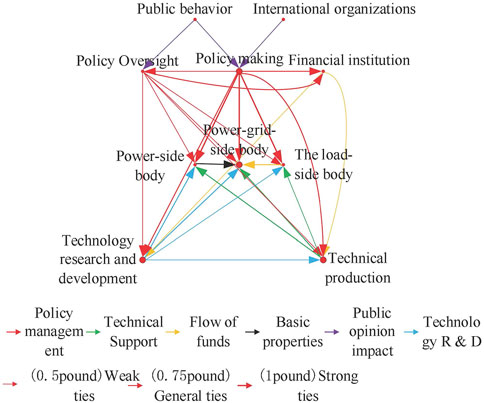
FIGURE 4. The correlation diagram of the participants involved in the evolution of the power system construction period.
4.2 Phase II: market reform, separation of factory and network (2002–2015)
During the period of market-oriented reform of the power system, Document No.5 of the Power Reform (2002) was promulgated, mainly to carry out a drastic reform of the monopoly behavior of the power system, at this time coal power still dominated, the voltage of transmission lines became higher, the coverage became more extensive, and renewable energy generation and energy storage began to develop. Figure 5 shows the network relationship during the market-oriented reform period of China’s power system.
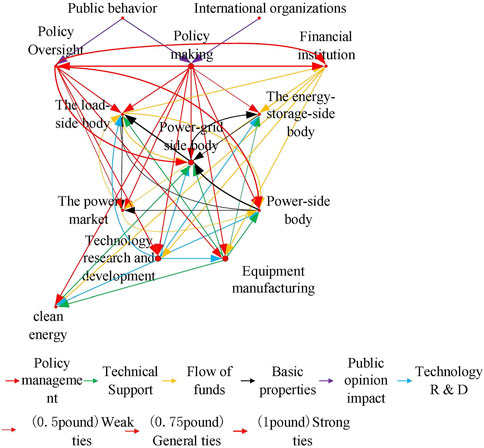
FIGURE 5. Correlation diagram of the evolution of participants in the period of market-oriented reform of the power system.
4.3 Phase III: electricity price reform, efficient and flexible (2015–2020)
During the deepening period of power system reform, Document No.9 of the Power Reform was promulgated (2015), which focused on solving problems such as electricity price reform, grid independence and liberalization of the electricity market. As the growth of national electricity demand slows down, the development of the power system pays more attention to safety, economy and environmental benefits, and the international impact continues to strengthen. Renewable energy power generation has gradually been integrated into the power generation group, and a pattern of cross-regional UHV transmission line connectivity has been formed nationwide, making users’ electricity consumption more flexible and intelligent. The orderly development of the “direct power supply” project and the microgrid project not only promotes the development of the circular economy model, but also promotes the coordinated development of the regional energy economy. Figure 6 shows the network relationship during the deepening period of China’s power system reform.
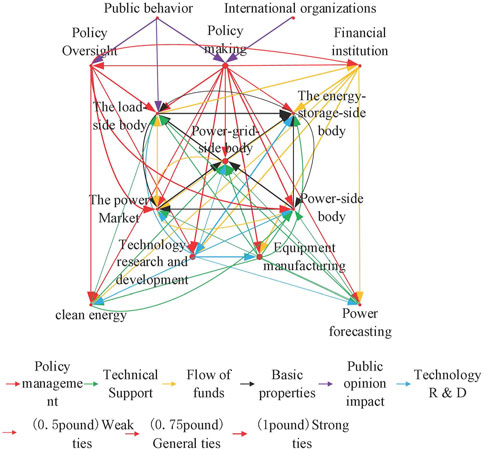
FIGURE 6. Relationship diagram of the evolution of participants in the period of deepening power system reform.
4.4 Phase IV: clean and low-carbon, smart and flexible (2020-present)
In the construction period of the new power system, the “carbon peak and carbon neutral” goal proposes to play a systematic and leading role in the green and low-carbon development of the power system. The realization of the “carbon peak and carbon neutral” goal requires the vigorous development of new energy sources such as wind and solar, and because new energy has the characteristics of randomness, volatility and intermittency, higher requirements will be put forward for the reliability of power supply and energy consumption capacity of the power system. Figure 7 shows the network relationship during the construction period of China’s new power system.
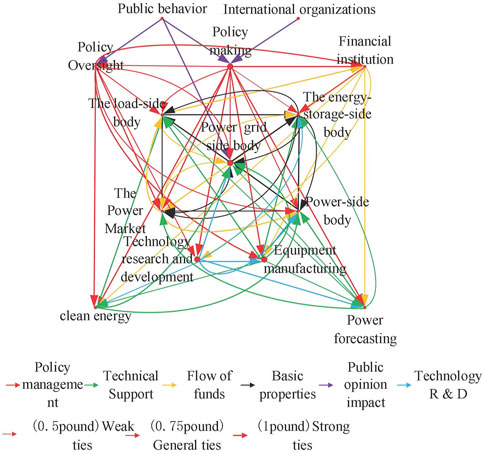
FIGURE 7. Relationship diagram of the evolution of participants in the construction period of new power system.
5 Analysis of the synergy law of power system evolution in China
This section analyzes the changes of collaborative entropy of each evolutionary participant in China’s power system, reveals the change of the evolutionary synergy ability of each participant, and analyzes the law of power system evolution and transformation.
5.1 Data description
Tables 2–5 is based on the correlation relationship between the evolutionary participants shown in Table 1, and the strength of the correlation between the subjects in the four evolutionary stages of the power system is obtained based on the landmark events that occur in the four stages. Taking Table 2 as an example, the correlation between A1 and A2 is policy management, and the intensity is 1. The relationship between A3 and A10 is capital flow, strength
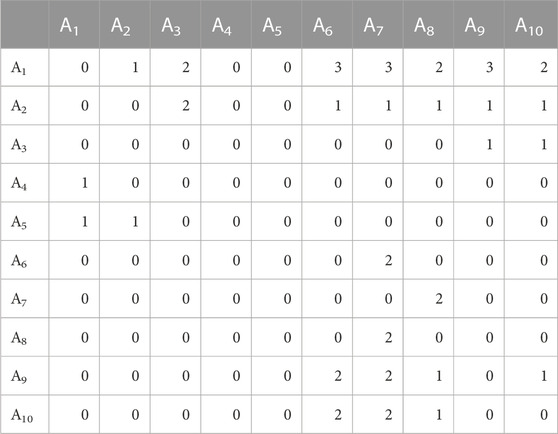
TABLE 2. The strength of the association relationship between the participants in the first stage of evolution.
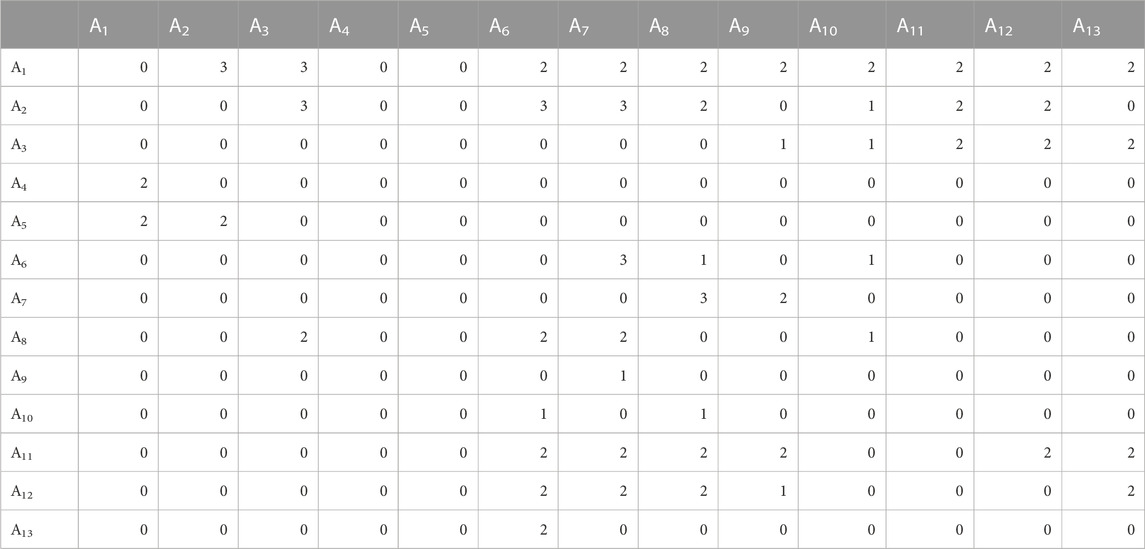
TABLE 3. Strength of association relationship between participating subjects in the second stage of evolution.
Tables 2–5 shows that with the continuous advancement of the evolution of the power system, more and more related subjects participate in the evolution, and the correlation relationship between the subjects is generally close.
5.2 Evolutionary co-entropy analysis of participating subjects
From equation (4), (8) and (9), the evolutionary co-entropy value of each evolutionary participant in China’s power system at each stage can be obtained, and the results are shown in Figures 8–10.
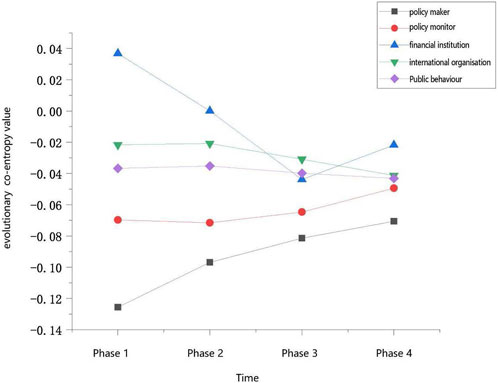
FIGURE 8. The evolution of the macro environment layer participates in the evolution of the subject of the co-entropy change.
5.2.1 Macro environment layer
As can be seen from Figure 8, the collaborative entropy of policymakers (A1) has gradually decreased, reflecting the government’s continuous relaxation of the development of the power system, reducing administrative intervention, and promoting the development of the electricity market. The collaborative entropy of policy supervisors (A2) declined after rising during the period of market-oriented reform of the power system, mainly because the government strengthened its supervision of the market while promoting the market-oriented reform of electricity, and later its influence decreased as the government gradually withdrew. The co-entropy of policymakers and policy supervisors remains negative, and the co-entropy of policymakers is always the largest among all subjects, and this variation of entropy enables the government to effectively coordinate the remaining evolutionary participants.
The collaborative entropy of financial institutions (A3) has experienced the process of gradually changing from positive entropy to negative entropy, and its entropy value change is greatly affected by the government, when the government promulgates the power reform policy to increase the liberalization of the electricity market, and broaden the investment and financing channels of the power system, the entropy of financial institutions changes from positive entropy (0.034) to negative entropy (−0.044) at a large change rate.
The co-entropy of international organizations (A4) and public behavior (A5) has undergone a process of first decreasing and then gradually increasing, but the range of change is not large, and in general, its collaborative entropy is on the rise, and the influence of international organizations and public behavior is increasing.
5.2.2 Meso-institutional layer
As can be seen from Figure 9, the evolutionary co-entropy of each evolutionary participant at the meso system layer has always remained positive. Among them, the collaborative entropy of the power-side body (A6) first decreased, and then increased during the construction period of the new power system. The collaborative entropy of the power-grid-side body (A7) first decreases, and then begins to rise during the deepening period of power system reform. The co-entropy of the load-side body (A8) appears as a wave-like change. In general, the collaborative entropy of the three sides of the “source grid load” showed a downward trend, and the cooperative entropy value on the grid side has always been the largest. The change of the synergistic entropy value on the three sides of the “source grid load” reflects the development process of China’s power system from “load with source movement” to “source with load” and then to “source network load coordination and interaction”, and the main body of the power grid side, as a bridge between the two sides of the source and load, has always played the role of the hub of the power system. At the same time, with the deepening of China’s power system reform, such as the “direct power supply” project and the microgrid project, the institutional barriers have been gradually broken, the interconnection of various subjects has been promoted, the coordinated entropy value of each subject has been reduced, and the power system has developed in a stable and orderly direction.
The increasing co-entropy value of the energy-storage-side body (A9) and the power market (A10) reflects their increasing role in the power system, but it also brings a large amount of positive entropy to the power system, and the coordination with the evolution of the power system needs to be improved, which is not conducive to the formation of the dissipative structure of the power system.
5.2.3 Micro-profit grassroots layer
As can be seen from Figure 10, the co-entropy of the scientific research institutions (A11) has always been negative in the overall evolution process, and its negative entropy value has increased significantly during the period of market-oriented reform of the power system. Equipment manufacturing (A12) co-entropy gradually increases from zero. Therefore, it can be said that the development trend of scientific and technological research and development and equipment manufacturing is the same, but equipment manufacturing always lags behind scientific and technological research and development. In short, the “production, education and research” force of China’s power system development is not coordinated enough, and the application and large-scale promotion of new technologies are relatively slow.
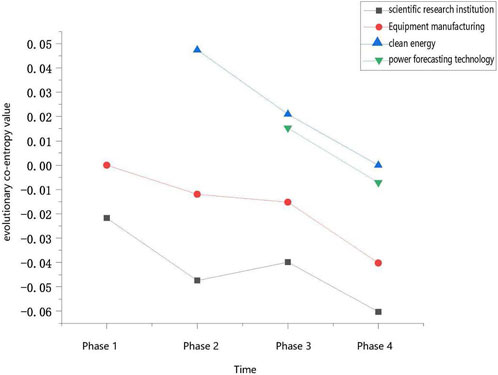
FIGURE 10. Micro-profit grassroots evolution participants in the evolution of the subject of the co-entropy change.
The co-entropy value of clean energy technology (A13) and power prediction technology (A14) continues to decrease, and the co-entropy value of power prediction technology becomes negative entropy during the construction period of new power system. Specifically, they are poorly coordinated when they first enter the power system, and do not match the existing power system, grid characteristics, electricity market and load demand. However, with the increase of policy, financial and technical support, their adaptability to the power system has been strengthened, and the coordination with the power system has been improved. The development of power forecasting technology is relatively late, and it appears in the positive entropy range, but with the increase of load forecasting, new energy forecasting and pre-side demand for electricity prices, the participation of power forecasting technology in power system operation increases, and its evolutionary coordination can be rapidly improved.
The evolutionary co-entropy of the micro-beneficial base layer has different degrees of influence and evolutionary influence on the power system at different stages of evolution, which is not only closely related to the level of its appearance, but also because the niche is easily affected by technology and productivity, therefore, the entropy change of the micro-beneficial base layer is not stable enough in the overall evolution process, and has been in a floating state under the influence of the macro environment layer and the meso system layer.
5.3 Total entropy analysis of power systems
From equations 3 and (8), the total entropy of the overall power system at each stage is shown in Figure 11.
As can be seen from figure 13, the total entropy of the overall power system gradually decreases from 0.818 to 0.726, of which the total entropy of the system reaches the maximum (0.833) during the market-oriented reform of the power system. In general, the total entropy of the overall power system evolution showed a downward trend, and the synergy ability between the participants in the power system continued to improve.
First, during the period of market-oriented reform of the power system, the total entropy of the system increased slightly compared with the previous period. This is mainly because the running-in time between the newly evolved subjects such as clean energy, energy storage and power market and the original power system is short, the degree of synergy is low, and a large amount of positive entropy is generated, while the collaborative entropy of the power system reduced by the reform of the power market is not enough to offset the increase in entropy, so that the power system develops in the direction of chaos and disorder.
Secondly, during the deepening period of power system reform, the total entropy of the overall power system decreased significantly compared with the previous period. This is because the government has further deepened the institutional reform, and promoted market-oriented transactions on the power supply side and the power sales side in accordance with the institutional framework of controlling the middle and releasing the two ends, which greatly broadened the investment and financing channels of the power system, greatly reduced the positive entropy value of the main body on the power supply side, and greatly increased the negative entropy value of financial institutions. At the same time, under the condition that the state subsidizes the development of new energy, a large number of wind and solar projects have been launched in various places, which has greatly promoted the development of clean energy niche and reduced the collaborative entropy of clean energy.
Finally, during the construction period of the new power system, the total entropy of the overall power system has dropped significantly compared with the previous period. This is because the proposal of the “carbon peak and carbon neutral” goal plays a leading role in the green and low-carbon development of the power system, and has overall significance for the development of the power system industry and technology, which significantly increases the negative entropy value of each evolutionary participant at the micro-beneficial grassroots level, and then greatly reduces the total entropy of the power system.
6 Conclusion and recommendations
6.1 Conclusion
This paper has constructed the Brusselator model of power system evolutionary synergy and demonstrated the evolutionary synergy capacity changes of each evolutionary participant in the process of power system evolutionary transformation and the law of power system evolutionary transformation through the changes of power system evolutionary synergy entropy and total entropy value. The following conclusions can be obtained from the analysis.
(1) The power supply side, power grid side, load side, energy storage side and power market of the power system will inevitably produce a large number of positive entropy values in the process of development, so that the system will move towards the irreversible process of decreasing effective energy conversion efficiency and increasing ineffective energy consumption. Therefore, on the one hand, it is necessary to coordinate the behavior of various subjects within the system to reduce the internal friction of the system; On the other hand, it is necessary to maintain the open state of the system, obtain a sufficient amount of negative entropy flow from the external environment, make the negative entropy flowing in from the outside greater than the positive entropy generated inside the system, and reduce the total entropy of the system to form a dissipative structure. In general, the total entropy of the overall power system evolution in China shows a downward trend.
(2) The evolutionary co-entropy of the macro-environment layer remains negative, and the policymaker co-entropy is always the largest, with negative entropy as high as −0.126 in the first stage. It shows that the government has always played a leading role in the evolution of the power system. The collaborative entropy of the participating subjects of the meso system layer always maintains a positive entropy state during the evolution process, and the overall cooperative entropy of the main body of the power supply side, the main body of the power grid side and the main body of the load side shows a downward trend, and its evolutionary coordination ability continues to improve, and the collaborative entropy of the main body on the energy storage side and the power market continues to rise, and its influence in the evolution of the power system continues to increase. The evolutionary co-entropy of micro-beneficial base layer showed an overall downward trend, and the negative entropy of scientific and technological research and development increased from −0.022 to −0.06, indicating that its role in the evolution of power system gradually increased.
(3) In the process of the evolution of the power system, the evolutionary coordination ability of all evolutionary participants has improved, among which the macro environment layer has generally shown a downward trend, but the public opinion and the evolutionary coordination ability of international organizations have been continuously improved; Due to the lock-in effect, the evolutionary synergy ability of the evolutionary participants changes little. The evolution of the participants at the micro-beneficial grassroots level has the most obvious change in the evolutionary coordination ability of the participants.
6.2 Development advice
Based on the evolutionary co-entropy of the power system and the change of total entropy, some suggestions can be put forward for the construction and development of new power system in China.
(1) For the macro level, because the government has a guiding role in the system, policymakers need to formulate scientific development policies in the early stage of the construction of the new power system, and constrain and guide other participants to promote the green and low-carbon development of the power system, and its negative entropy value may be increased to a certain extent, and policy supervisors and financial institutions as an important part of the government’s implementation of policies, their negative entropy value will also increase to a certain extent. However, the nature of the industrial cultivation method represented by subsidies is a preferential model for the government, and there are problems of government choice failure or excessive support, which may lead to overcapacity, inefficiency, and neglect of other industrial development goals. Therefore, as various affairs are on the right track, the overall negative entropy value is still declining, and the government’s influence on the evolution of the power system will continue to decrease, and gradually shift to the endogenous driving force of the meso system and the micro-niche technological innovation driven development. In addition, with the improvement of the level of government affairs openness and international participation, public opinion and international organizations will play a greater role.
(2) For the meso-layer, with the integration of source, grid, load and storage and the construction of the national unified electricity market, the connection between the subjects within the power system will become closer, and the evolutionary coordination ability between the subjects will continue to improve. However, in order to adapt to the requirements of real development, the power system needs to continuously introduce new technologies, new systems, and new information to resist the unconscious increase in entropy of the system. On the one hand, it is necessary to continue institutional reform to reduce the internal consumption of the system caused by the development of the power system that is not suitable for the distribution of the system, and in view of the situation that the collaborative entropy value of the energy storage side and the power market is still rising, it is necessary to promote the development of new business models for energy storage, develop power grid-side, power-side and load-side energy storage, establish and improve the institutional mechanism of the electricity market, give play to the role of the market in the allocation of power resources, and improve the evolutionary synergy between the main body on the energy storage side and the power market. On the other hand, efforts need to be made to introduce external negative entropy to weaken the trend of entropy increase within the power system, maintain the balance of the system, keep the power system open, and broaden the communication channels between the power system and the public and international organizations under the trend of gradually weakening the influence of the government, and enhance the role of public opinions in promoting the evolution of the power system.
(3) For the micro level, the realization of “carbon peak and carbon neutral” requires the support of a higher level of power system technology, and the development role of scientific research institutions and equipment manufacturing in improving the benefits of the main body such as the source and network load storage of the meso layer will continue to be highlighted. In the early stage of the construction of the new power system, the government needs to support the development of relevant technologies, and with the continuous development and maturity of innovative technologies, the scale of relevant innovative technologies continues to expand, and the government’s support for innovative technologies should be reduced, and its technological development level should be improved through market competition.
Data availability statement
The original contributions presented in the study are included in the article/Supplementary Material, further inquiries can be directed to the corresponding author.
Author contributions
YW: experiment and writing–original draft. YS: experiment and methodology FL: experiment and methodology. YaL: supervision and writing–review and editing, TX, AL, and KX: supervision and writing–review and editing. All authors contributed to the article and approved the submitted version.
Funding
This work was financially supported by State Grid Sichuan Electric Power Company (Research on the theoretical method of constructing the new power system in Sichuan under the “carbon peaking and carbon neutrality” goal, SGSCJY00NYJS2200058).
Conflict of interest
The authors declare that this study received funding from State Grid Sichuan Electric Power Company. The funder had the following involvement in the study: data collection.
The authors declare that the research was conducted in the absence of any commercial or financial relationships that could be construed as a potential conflict of interest.
Publisher’s note
All claims expressed in this article are solely those of the authors and do not necessarily represent those of their affiliated organizations, or those of the publisher, the editors and the reviewers. Any product that may be evaluated in this article, or claim that may be made by its manufacturer, is not guaranteed or endorsed by the publisher.
References
Chen, S., Wang, Y., Du, H., and Cui, Z. (2023). The current situation, development aims and policy recommendation of China’s electric power industry. Int. J. Clim. Change Strategies Manag. 15, 282–299. doi:10.1108/ijccsm-01-2023-0006
Dong, J., Liu, D., Dou, X., Li, B., Lv, S., Jiang, Y., et al. (2021). Key issues and technical applications in the study of power markets as the system adapts to the new power system in China. Sustainability 13, 13409. doi:10.3390/su132313409
Fan, G. Q., Wang, Q. S., Huang, J., et al. (2022). Research on coordinated dispatch method of source-load-storage in new power system. Energy Eng. 42 (03), 83–87.
Feng, Q., Ma, T. L., Qi, C., Zhu, H. L., et al. (2014). Statistical properties and robustness analysis of power grids for various evolution. J. North China Electr. Power Univ. Nat. Sci. Ed. 41 (04), pp35–40.
Geels, F. W. (2010). Ontologies, socio-technical transitions (to sustainability), and the multi-level perspective. Res. policy 39 (4), 495–510. doi:10.1016/j.respol.2010.01.022
Kang, C., Kirschen, D., and Green, T. (2023). The evolution of smart grids. Proc. IEEE 111, 691–693. doi:10.1109/JPROC.2023.3284213
Li, H., Liu, D., and Yao, D. (2021a). Analysis and reflection on the development of power system towards the goal of carbon emission peak and carbon neutrality. Proc. CSEE 41 (18), 6245–6259.
Li, S., and Jiang, F. (2022). An empirical analysis of social public resources digital sharing system: dissipative structure theory. PLoS One 17, e0271300. doi:10.1371/journal.pone.0271300
Li, X., Li, B. Z., and Su, Y. (2016). Study on dissipative structures of enterprise technology acquisition system in China based on Brusselator model. Sci. Technol. Prog. Policy 3 (20), 91–96.
Li, Z., Chen, S. Y., Dong, W. J., et al. (2021b). Low carbon transition pathway of power sector under carbon emission constraints. Proc. CSEE 41 (12), 3987–4001.
Liang, X., Si, D., and Xu, J. (2018). Quantitative evaluation of the sustainable development capacity of hydropower in China based on information entropy. Sustainability 529.
Liu, C. Y., and Wang, W. (2016). Research on knowledge transfer model and mechanism of industry-university-research collaborative innovation team based on the dissipative structure theory. Inf. Sci. 3, 42–47.
Llibre, J., and Valls, C. (2020). Global qualitative dynamics of the Brusselator system. Math. Comput. Simul. 170, 107–114. doi:10.1016/j.matcom.2019.01.017
Ning, L., Yuan, T., and Wu, H. (2022). New power system based on renewable energy in the context of dual carbon. Int. Trans. Electr. Energy Syst. 2022, 1–8. doi:10.1155/2022/6428791
Ren, P. Y., Zhang, L., and Song, Y. (2001). Management entropy, management dissipative structure theory and their role in enterprise organization and decision-making based on complexity science. J. Manag. World 06, 142–147.
Riaz, S., Morgan, D., and Kimberley, N. (2023). Managing organizational transformation (OT) using complex adaptive system (CAS) framework: future lines of inquiry. J. Organ. Change Manag. 36, 493–513. vol.ahead-of-print , no.ahead-of-print. doi:10.1108/jocm-08-2022-0241
Schieve, W. C., and Allen, P. M. (1982). Self-organization and dissipative structures:applications in the physical and social sciences. Texas: University of Texas Press, 12–31.
Shu, Y. B. (2021). Development of new power systems to help achieve the "double carbon" target. Strategic Study CAE 07, 8–9.
Su, Y. (2013). Research on technological innovation of large and medium-sized enterprises from the perspective of dissipative structure theory. J. Industrial Eng. Eng. Manag. 27 (2), 107–114.
Ttovstyuk, C. (2020). “Mathematical modeling of epidemic spread for diseases with different virulence indexes,” in 2020 IEEE 15th International Conference on Advanced Trends in Radioelectronics, Telecommunications and Computer Engineering (TCSET), Lviv-Slavske, Ukraine, 25-29 February 2020.
Vasilakis, A., Zafeiratou, I., Lagos, D., and Hatziargyriou, N. D. (2020). The evolution of research in microgrids control. IEEE Open Access J. Power Energy 7, 331–343. doi:10.1109/oajpe.2020.3030348
Voropai, N. (2020). Electric power system transformations: a review of main prospects and challenges. Energies 13 (21), 5639. doi:10.3390/en13215639
Weiser, A. K., and Laamanen, T. (2022). Extending the dynamic equilibrium model of paradox: unveiling the dissipative dynamics in organizations. Organ. Theory 3, 263178772210903. doi:10.1177/26317877221090317
Yang, X., Guo, Y., Liu, Q., and Zhang, D. (2021). Dynamic Co-evolution analysis of low-carbon technology innovation compound system of new energy enterprise based on the perspective of sustainable development.
Yang, Y., Liu, S., Lan, M., Shen, W., and Zeng, M. (2019). Study on the evolution stages and mechanism of China’s unified national electricity market. IOP Conf. Ser. Earth Environ. Sci. 252, 032010. doi:10.1088/1755-1315/252/3/032010
Yin, H. Y., and Zeng, Z. M. (2021). Research on the Dissipative Evolution of High-tech Industrial Innovation Ecosystem: an empirical analysis of China's provincial regions using the brusselator model. West Forum 31 (06), 81–95.
Zhang, J. C., and Fang, W. H. (2022). Research on the evolution of innovation ecosystem from the perspective of policy change: taking the new energy vehicle industry as an example. Sci. Technol. Manag. Res. 42 (11), 173–182.
Zhang, X. L., Huang, X. D., Zhang, D., et al. (2022). Carbon neutral energy under the target of the economic transformation path and policy research. J. Manag. World 38 (01), 35–66.
Zhang, Z. Z., and Kang, C. Q. (2022). Challenges and prospects for constructing the new-type power system towards a carbon neutrality future. Proc. CSEE 42 (08), 2806–2819.
Zhao, Y., Xia, S., Zhang, J., Hu, Y., and Wu, M. (2021). Effect of the digital transformation of power system on renewable energy utilization in China. IEEE Access 9, 96201–96209. doi:10.1109/access.2021.3094317
Keywords: new power system, evolutionary synergy, dissipation theory, Brusselator model, network analysis
Citation: Wang Y, Su Y, Liu F, Liu Y, Xie T, Li A and Xu K (2023) Co-evolution analysis of novel power system based on Brusselator model. Front. Energy Res. 11:1232094. doi: 10.3389/fenrg.2023.1232094
Received: 31 May 2023; Accepted: 05 October 2023;
Published: 13 December 2023.
Edited by:
Xiaolei Yuan, Aalto University, FinlandReviewed by:
Zhengmao Li, Aalto University, FinlandKonstantinos Spiliotis, University of Rostock, Germany
Copyright © 2023 Wang, Su, Liu, Liu, Xie, Li and Xu. This is an open-access article distributed under the terms of the Creative Commons Attribution License (CC BY). The use, distribution or reproduction in other forums is permitted, provided the original author(s) and the copyright owner(s) are credited and that the original publication in this journal is cited, in accordance with accepted academic practice. No use, distribution or reproduction is permitted which does not comply with these terms.
*Correspondence: Yunling Wang, Mzc2NTczMDlAcXEuY29t
 Yunling Wang
Yunling Wang Yunche Su1
Yunche Su1